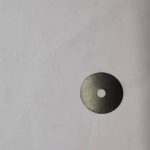Ferric chloride etching on stainless steel is a process that marries chemistry and craftsmanship, yielding intricate designs and precise patterns on one of the world’s most durable and versatile materials.
This technique is employed in various fields, from creating detailed artwork and jewelry to manufacturing complex industrial components. Understanding the nuances of this method involves delving into the chemical reactions at play, the procedural steps, and the safety precautions necessary for a successful etching process.
Understanding Ferric Chloride and Stainless Steel
Ferric Chloride (FeCl3): Ferric chloride is a highly corrosive salt, appearing typically as a dark, reddish-brown crystalline solid. When dissolved in water, it forms a yellow-orange solution. This chemical is a potent etchant, capable of breaking down metals through oxidation-reduction reactions. It is widely used in PCB (Printed Circuit Board) manufacturing, metallurgy, and various metal etching applications.
Stainless Steel: Stainless steel is an alloy primarily composed of iron, carbon, and chromium, with the latter providing resistance to corrosion. Depending on its specific composition, stainless steel can also contain other elements such as nickel, molybdenum, and titanium. The chromium content forms a passive layer of chromium oxide on the surface, which protects the underlying metal from rust and corrosion. This characteristic makes stainless steel both a challenging and rewarding material to etch.
The Chemistry of Etching with Ferric Chloride
The etching process involves immersing stainless steel in a ferric chloride solution, where a redox reaction occurs. Ferric chloride acts as an oxidizing agent, reacting with the metal surface to form soluble iron(III) ions and chloride ions. The chemical equation for this reaction is as follows:
FeCl3+Fe→FeCl2+FeCl2
In this reaction, ferric chloride (FeCl3) oxidizes the iron in the stainless steel, resulting in ferrous chloride (FeCl2) and dissolved iron ions. The process continues, effectively eating away at the metal surface to create the desired patterns.
Preparation and Safety Measures
Before beginning the etching process, proper preparation and safety measures are paramount. Here are the essential steps:
- Work Area: Ensure the workspace is well-ventilated to avoid inhaling fumes. Cover the work surface with protective materials to prevent damage from spills.
- Safety Gear: Wear protective gloves, safety goggles, and a lab coat or apron. Ferric chloride is corrosive and can cause severe skin and eye irritation.
- Materials: Gather all necessary materials, including stainless steel sheets, ferric chloride solution, resist materials (such as wax, tape, or specialized etching resists), and containers for the etching solution.
Step-by-Step Etching Process
- Design Preparation: Create the design you wish to etch. This can be done manually or using computer software for more intricate patterns. Print or draw the design on a resist material.
- Application of Resist: Apply the resist material to the stainless steel surface. This step is crucial as it protects areas that should not be etched. For detailed designs, photolithography can be used to transfer the pattern precisely.
- Etching Solution: Prepare the ferric chloride solution. Typically, a concentration of 40% ferric chloride in water is used. The solution should be prepared in a plastic or glass container, as ferric chloride can corrode metal containers.
- Immersion: Immerse the stainless steel piece into the ferric chloride solution. Ensure that the piece is fully submerged and agitate the solution gently to prevent air bubbles from forming on the surface.
- Etching Time: The duration of the etching process depends on the desired depth of the etch and the concentration of the ferric chloride solution. It usually takes between 30 minutes to several hours. Regularly check the progress to avoid over-etching.
- Rinsing and Cleaning: Once the desired etch depth is achieved, remove the stainless steel from the solution and rinse it thoroughly with water to stop the etching reaction. Remove the resist material and clean the surface with a suitable solvent if necessary.
- Finishing: The etched stainless steel piece may need further finishing, such as sanding, polishing, or coating, to enhance its appearance and durability.
Applications and Artistic Uses
Ferric chloride etching on stainless steel finds applications in various domains:
- Art and Jewelry: Artists and jewelers use this technique to create intricate designs, patterns, and textures on stainless steel pieces. The process allows for high precision and customization.
- Industrial Components: In industrial settings, etching is used to create complex components and circuit boards. The precision of ferric chloride etching ensures that fine details and exact specifications are met.
- Decorative Panels: Architectural and interior design industries employ etched stainless steel panels for decorative purposes. These panels can feature detailed artwork, logos, or patterns, adding an element of sophistication to buildings and spaces.
Challenges and Considerations
While ferric chloride etching offers numerous benefits, there are challenges and considerations to keep in mind:
- Waste Disposal: Proper disposal of used ferric chloride solution is crucial, as it is considered hazardous waste. Follow local regulations for disposal or consider recycling the solution through regeneration processes.
- Material Compatibility: Ensure that the stainless steel grade is compatible with the etching process. Some stainless steel alloys may react differently, affecting the quality of the etch.
- Control and Precision: Achieving uniform and precise etching can be challenging. Factors such as solution concentration, temperature, and immersion time need to be carefully controlled.
Conclusion
Ferric chloride etching on stainless steel is a fascinating blend of art and science, offering a versatile method for creating detailed and precise designs on a robust material. By understanding the chemical principles, following meticulous preparation steps, and adhering to safety protocols, one can achieve remarkable results in both artistic and industrial applications. Whether for creating beautiful jewelry, intricate artwork, or precise industrial components, the technique of ferric chloride etching continues to inspire and enable creativity and innovation.
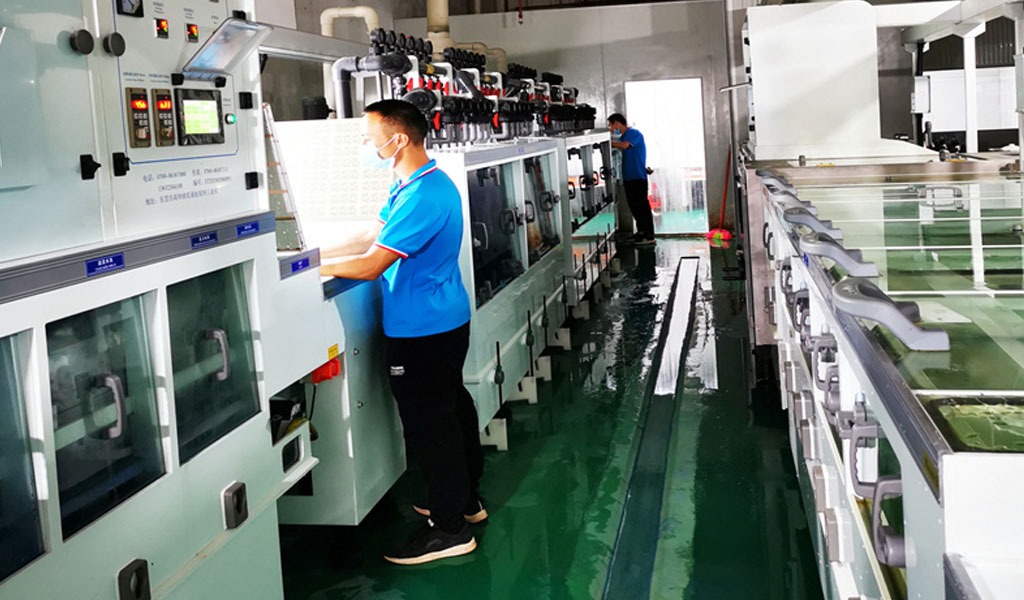
We Can Take Care Of Your Metal Etching Needs.
BE-CU metal etching china company’s strength lies in our investment in chemical etching production line. Chemical etching production line are the foremost innovation to the metal etching industry.
The programmability of Chemical etching production line gives us quick and accurate repeatability. This constant replication allows for better finishes, tighter tolerances and most importantly – faster cycles for metal forming.
By engaging our etching company, you can also get the much-needed support to design your part for any specific purpose. Our team can provide custom design tips, such as ensuring consistent wall thickness and avoiding overly thick sections that can sink.
Are you designing new products for projects companies? We can help! Here at BE-CU Metal Etching China Company, we offer a reasonably priced rapid metal etching service that will allow you to make an amazing prototype that will impress your clients. Get a free project review here so we can get started for your metal etching products!
- Photo Etching for Medical Use

- Photo Etching for Metal Sign
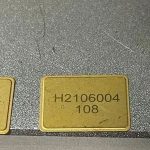
- Photo Etching for Jewelry

- Ferric Chloride Etching Stainless Steel
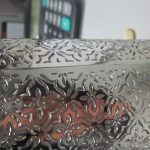
- The Best Acid for Etching Steel

- The Principle And Process Flow Of PCB Etching Machine

- In The Localization Of Wafer Foundry Equipment, Etching Machines Stand Out

- How Important is the Blind Hole Rate of Filter Screens?
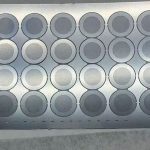
- The whole process of stainless steel sheet etching
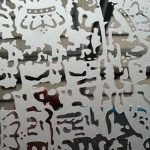
- What is the Role of Aperture Diaphragms in the Field of Optics?
